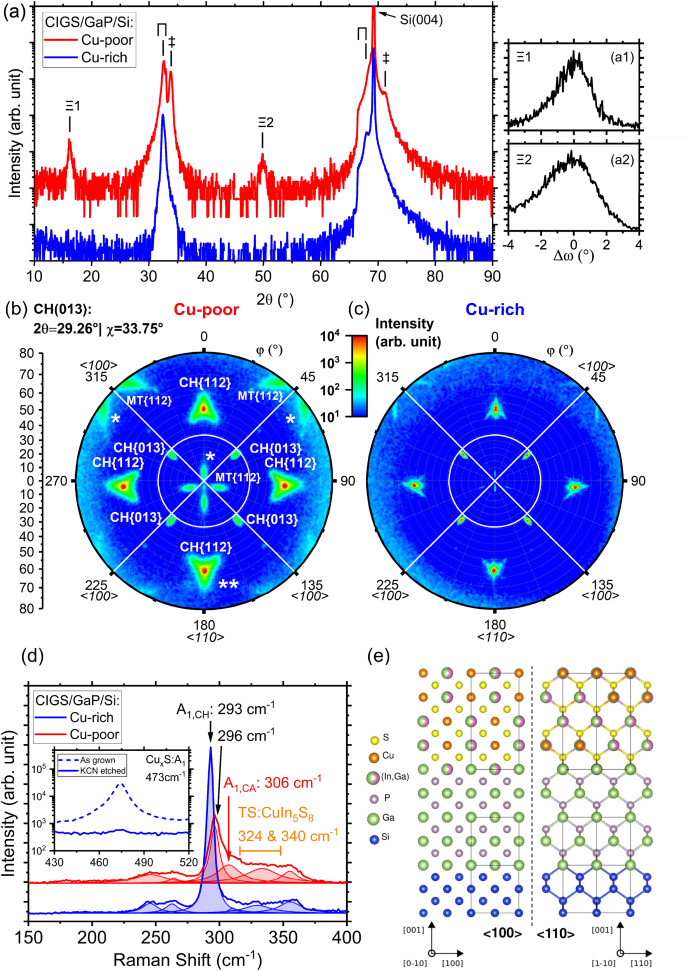This study examines the growth condition to obtain a single-phase Cu(In,Ga)S2 (CIGS) chalcopyrite film epitaxially grown by coevaporation on a GaP/Si(001) pseudo-substrate. In particular, we report the structural differences between KCN-etched Cu-rich and Cu-poor CIGS films coevaporated on GaP/Si(001) by 1-stage process. The Cu-poor CIGS film consists of at least three phases; the main crystal is found to be chalcopyrite-ordered, coexisting with In-rich CuIn5S8, and CuAu-ordered CuInS2, all sharing epitaxial relationships with each other and the GaP/Si(001) pseudo-substrate. On the other hand, the Cu-rich CIGS film is single-phase chalcopyrite and displays sharper X-ray diffraction peaks and a lower density of microtwin defects. The elimination of the secondary CuAu-ordered phase with Cu excess is demonstrated. In both films, the chalcopyrite crystal exclusively grows with its c-axis aligned with the out-of-plane direction of Si[001]. This study confirms prior findings on the thermodynamics of Cu–In-Ga-S and the stability of secondary phases. This work paves the way to the future development of CIGS/Si tandem solar cells.

(a) Low resolution longitudinal ω/2θ scan along the [001] direction of the Si substrate. Transverse ω scans displaying the highly textures nature of the (a1) Ξ1 and (a2) Ξ2 CA peaks. (bc) Pole figures of the (b) Cu-poor and (c) Cu-rich sample at the theoretical Bragg angle of the CH(013) reflection, exclusive to the CH. A white crosshair point at the predicted position of the CH(013) planes, not accounting for the 6° miscut tilt. (d) Raman spectra of the Cu-rich and Cu-poor samples at 514 nm excitation wavelength. Inset: Zoom at the position of the Cu2-xS A1 peak for the as grown and KCN-etched Cu-rich sample. (e) Schematics of the crystal stack corresponding to the following epitaxial relationship: CH[100](001)//GaP[100](001)//Si[100](001).
Article published in: Materials Science in Semiconductor Processing
This work is supported by the French National Research Agency project EPCIS (Grant no. ANR-20-CE05-0038)